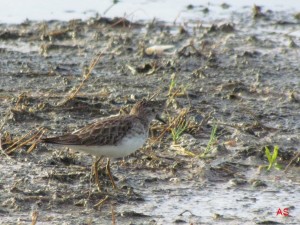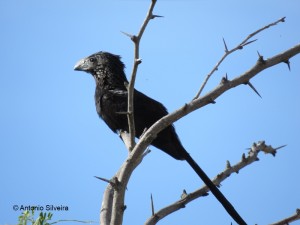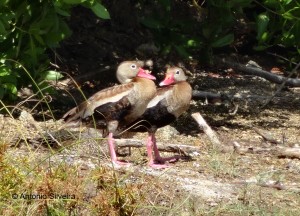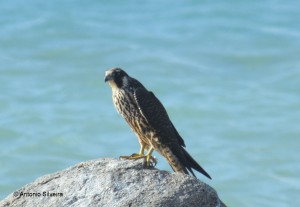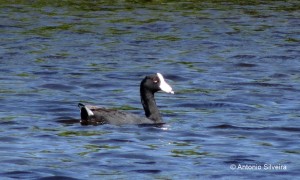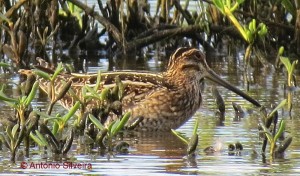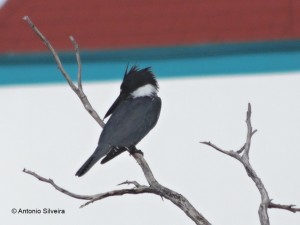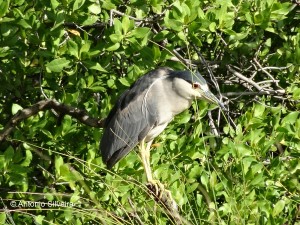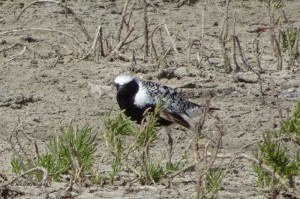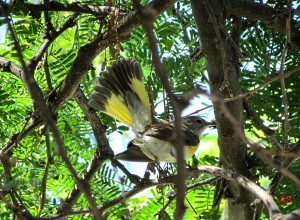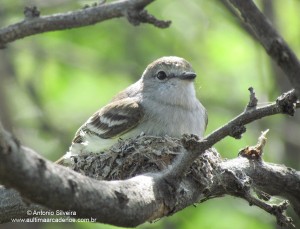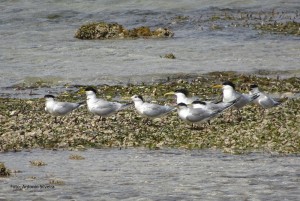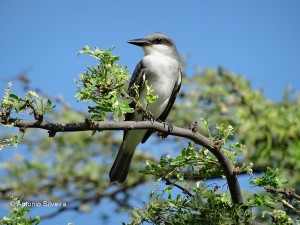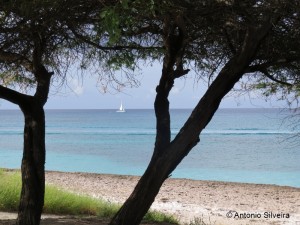Birds of Aruba
According of tourism folders Aruba in the Caribbean Sea situated about 24 km offshore Venezuela has 182 km2 and is 31.36 km long by 9.6 km wide. The highest point is Mount Jamanota with 185 m / al (or 617 feet).
Its capital is Oranjestad, a charming town that closely resembles the Netherlands, which is not least being that because Aruba is part of Dutch territory, although the degree of autonomy achieved long ago.
Despite being one of Aruba’s most popular resorts in the world and one of the best diving destination, with its large hotel chain, also has natural areas represented mainly by the Arikok National Park, Bubali Bird Sanctuary and Wetlands of Palm Beach region.
Interestingly, natural areas and even in altered areas met the Divi-divi (Caesalpinia coriaria), photo below, whose distribution extends from the Caribbean, Mexico, Central America and northern South America, but they are very famous and somewhat protected in island.
Aruba has about 70 species of birds residents and many species migrants. The rarest bird of the island is the chicken of water-Fulica caribaea (Caribbean Coot), with only about 100 individuals in the wetlands of the island, which we were lucky to see one. And Athene cunicularia arubensis ( Burrowing Owl), endemic and one of most known and protected bird of the island.
Arikok National Park created in 2000 is administered by a foundation, has 20 miles of trails and protect natural areas and arid part of the island and its coast, with caves and natural swimming pools (http://www.arubanationalpark.org/). But the Bubali Bird Sanctuary protects one of the main wetlands of the Caribbean, including a site is RAMPS.
But there are other flooded areas, especially in Palm Beach, home to major hotels and easy to be visited, as are adjacent to the coastal road that passes behind the hotels.In our stay in this beautiful island, we made these observations in the flooded areas, areas of hotels and visit in the afternoon of 16/11 Sancturay Bubali Bird, where he delighted in the beauty of the place.
The Bubali Plas, as is known, is a public reserve, formed by a complex of interconnected lakes and wetlands, providing an important refuge for wildlife, especially under water good to Fish-watching (Fish-watching in Aruba).
There are dozens of species living on the island and many migrants use their lakes and wetlands to rest and feed.On site there is a viewpoint of about 6 feet tall, which allows the observer to be comfortably protected from the sun and with a fantastic view of much of the area.
In November 2010; June; and November 2011, May 2012, November 2012, May and November 2013, May and November 2014, May and November 2015, May 2016, May and November 2018, May and november 2019, May and November 2022, May 2023 and November 2023 we were (Antonio Silveira) on the Caribbean island of Aruba, where we had the opportunity to make some observations of fauna, especially its birds. By Antonio Silveira
Following is a list of 97 species of birds observed and identified in our visits in Aruba, with annotations of sites, in alphabetical order: By Antonio Silveira
Legend:
APB – flooding (wetland) of Palm Beach.
ARASHI – areas of west of the island (California lighthouse)
BABBY BEACH – region of Seroe Colorado
HPB – areas of hotels in Palm Beach
BBS – Bubali Bird Sanctuary
MMK – Malmok region
PNA – Arikok National Park
AR-WP – Arashi and West Point regions
———–
SPECIES: CIENTIFIC NAMES AND ENGLISH NAMES (click the photos)
Actitis macularius; Spotted Sandpiper APB BBS (abaixo/below)
Anas bahamensis; White-cheeked Pintail BBS (VIDEO) (VIDEO)
Anas clypeata; Northern Shoveler BBS
Anas discors; Blue-winged Teal HPB – BBS (VIDEO) (VIDEO)
Anous minutus americanus, Black noddy
Aratinga pertinax; Brown-throated Parakeet (all areas visited) (VIDEO) (VOICE)
Ardea alba; Great Egret APB – BBS – MMK (VIDEO)
Ardea herodias; Great Blue Heron BBS – APB
Arenaria interpres; Ruddy Turnstone APB (VIDEO)
Athene cunicularia arubensis; Burrowing Owl AR-WP (VIDEO)
Aythya affinis; Lesser Scaup APB
Aythya collaris; Ring-necked Duck APB
Bubulcus íbis;Cattle Egret APB BBS (VIDEO)
Butorides virescens; Green Heron BBS (VIDEO)
Calidris alba; Sanderling (Baby Beach) (VIDEO)
Calidris fuscicollis, White-rumped Sandpiper
Calidris mauri; Western Sandpiper APB
Calidris melanotos; Pectoral Sandpiper APB (VIDEO)
Calidris minutilla; Least Sandpiper APB (yellowish legs) (VIDEO)
Caracara plancus cheriway; Crested Caracara APB – BBS- AR-WP
Charadrius semipalmatus; Semipalmated Plover ARASHI
Charadrius vociferus; Killdeer APB BBS (VIDEO)
Chlorostilbon mellisugus; Blue-tailed Emerald (all areas visited)
Chloroceryle amazona; Amazon Kingfisher –BBS
Chrysolampis mosquitus, Ruby-topaz Hummingbird BBS
Coccyzus americanus: Yellow-billed Cuckoo BBS AR-WP
Colinus cristatus; Crested Bobwhite MMK (VIDEO) (VOICE)
Columba corensis; Bare-eyed Pigeon (all areas visited) (VIDEO) (VOICE)
Columba squamosa; Scaly-naped Pigeon APB – HPB – BBS
Columbina passerina; Common Ground-Dove (all areas visited) (VIDEO)
Crotophaga sulcirostris; Groove-billed Ani BBS ARASHI (VIDEO)
Dendrocygna autumnalis; Black-bellied Whistling-Duck APB BBS (VIDEO)
Egretta thula; Snowy Egret APB – BBS (VIDEO)
Egretta caerulea; Little Blue Heron APB
Egretta rufescens; Reddish Egret APB BBS (VIDEO 1 whitw phase)
Egretta tricolor; Tricolored Heron – HPB BBS (VIDEO)

Eudocimus albus; White Ibis BBS APB
Eudocimus ruber; Scarlet ibis APB
Falco columbarius; Merlin – HPB
Falco peregrinus; Peregrine Falcon – AR-WP
Falco sparverius; American Kestrel – APB – HPB – BBS (VIDEO)
Fregata magnificens; Magnificent Frigatebird (all shores) (VIDEO)
Fulica americana; American Coot BBS Observation: Different than Fulica caribaea because frontal shield small white, with small red brown on top. In F.caribaea the shield is all white and extending onto crown. I believe it is a rare record for Aruba, or the first record. (VIDEO)
Fulica caribaea; Caribbean Coot BBS (VIDEO 1) (VIDEO 2) (VOICE)
Gallinago gallinago delicata; Wilson’s Snipe – APB (VIDEO)
Gallinula galeata; Common Moorhen – BBS (VIDEO)
Haematopus palliatus ; American Oystercatcher – MMK – Malmok region- AR-WP (VIDEO)
Himantopus mexicanus; Black-necked Stilt – APB – PNA – HPB (VIDEO)
Hirundo rustica; Barn Swallow (alls areas visited)
Icterus icterus; Troupial (all areas visited) (VIDEO) (VOICE)
Icterus nigrogularis; Yellow Oriole – MMK
Larus argentatus, European herring gull (to confirm)
Larus atricilla; Laughing Gull (all cost and Arikok NP and cost of Palm Beach and Arashi) (VIDEO)
Leptotila verreaux; White-tipped Dove – MMK
Machetornis rixosa; Cattle Tyrant – MMK
Megaceryle alcyon; Belted Kingfisher
Micropalama himantopus; Stilt Sandpiper – APB (VIDEO)
Mimus gilvus; Tropical Mockingbird (all areas visited) (VIDEO) (VIDEO)
Molothrus bonariensis; Shiny Cowbird HPB
Numenius phaeopus; Whimbrel (Baby Beach) (VIDEO)
Nycticorax nycticorax; Black-crowned Night-Heron BBS (VIDEO)
Pandion haliaetus; Osprey – BBS – AR-WP (VIDEO) (VIDEO)
Passer domesticus; House Sparrow (all areas visited)
Pelecanus occidentalis; Brown Pelican BBS – (alls shores) (VIDEO)
Petrochelidon pyrrhonota, Cliff Swallow
Phalacrocorax brasilianus; Neotropic Cormorant – BBS
Phoenicopterus ruber; Greater Flamengo – MMK (VIDEO)
Platalea ajaja; Roseate Spoonbill – APB (VIDEO)
Plegadis falcinellus; Glossy Ibis APB (VIDEO)
Pluvialis squatarola; Grey Plover – APB
Podilymbus podiceps; Pied-billed Grebe – BBS (VIDEO)
Porzana carolina; Sora – BBS (VIDEO) (VIDEO)
Quiscalus lugubris; Carib Grackle (all areas visited) (VIDEO) (VIDEO)
Quiscalus mexicanus; Great-tailed Grackle or Mexican Grackle (recorded one female on beach on Palm Beach, area, 21-5-2014, and 18-5-2016 and male in 20-5-2016. photos below)
Rynchops niger; Black Skimmer APB
Setophaga petechia rufopileata; Yellow Warbler (all areas visitad) (VIDEO) (VOICE)
Setophaga ruticilla; American Redstart MMK
Sterna antillarum ; Least Tern (all shores)
Sterna hirundo; Common Tern (all shores)
Sublegatus arenarum; Northern Scrub-Flycatcher – BBS
Sula leucogaster; Brown Booby (alls shores)
Thalasseus acuflavidus, Cabot’s tern
Thalasseus acuflavidus eurygnatha, Cayenne Tern ARASHI
Thalasseus maxima; Royal Tern (alls shores)
Tiaris bicolor; Black-faced Grassquit (all areas visited) (VIDEO) (VOICE)
Tringa flavipes; Lesser Yellowlegs – APB (VIDEO)
Tringa melanoleuca; Greater Yellowlegs – APB
Tringa solitaria; Solitary Sandpiper – APB
Tyrannus dominicensis; Grey Kingbird (all areas visited) (VIDEO)
Tyrannus melancholicus: Tropical Kingbird
Tyrannus tyrannus, Eastern Kingbird BBS
Vanellus chilensis; Southern Lapwing – APB – BBS (VIDEO)
Zenaida auriculata vinaceorufa; Eared Dove (all areas visited) (VIDEO)
Zonotrichia capensis; Rufous-collared Sparrow – HPB
————–
Besides the birds we have seen some lizards, including the Iguana, common in natural areas of hotels, Aruba Blue lizard (Cnemidophorus arubensis), endemic to the island, but common in almost all places and frogs (Pleurodema brachyops) as the photos below. On 23/11/2011, we heard the night in a temporary pond in the Palm Beach region of the vocalizations of Bufo marinus (GiantToad), recently introduced on the island.
Faced with what we saw and found so far, Aruba is very interesting in terms of ornithological what motivates us to go back to learn more about their birds.
We thank company of my wife Gianine Luiza.
————
Beaches and wetlands of Palm Beach
Malmok Beach and region
Bubaliplas (Bird Sanctuary)


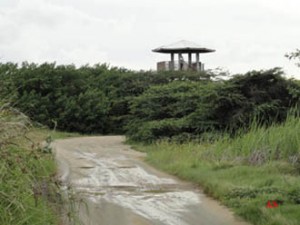

Arikok National Park
Fauna (some others animals) of Aruba


Cnemidophorus arubensis (Codoto; Aruba whitptail)
Ameiva bifrontata (Cope’s Ameiva)
Donkey (Equus asinus asinus; Feral Donkey)
—————————–
See ours records in THE INTERNET BIRD COLLECTION and our channel in YOUTUBE
See in PDF : BIRDING IN ARUBA,by Antonio Silveira
VIDEOS: Conhecendo o Bubali Plas, Aruba, Nov.2016, Antonio Silveira
Some videos of Aruba (birds, lizards, places etc) by Antonio Silveira
—————–
The author Antonio Silveira in field:
—————————
Antonio Silveira: last update: 21/11/2016, 24-11-2016, 28-5-2017, 26-11-2017, 25-4-2023. 03-10-2023. 28-11-2023
























